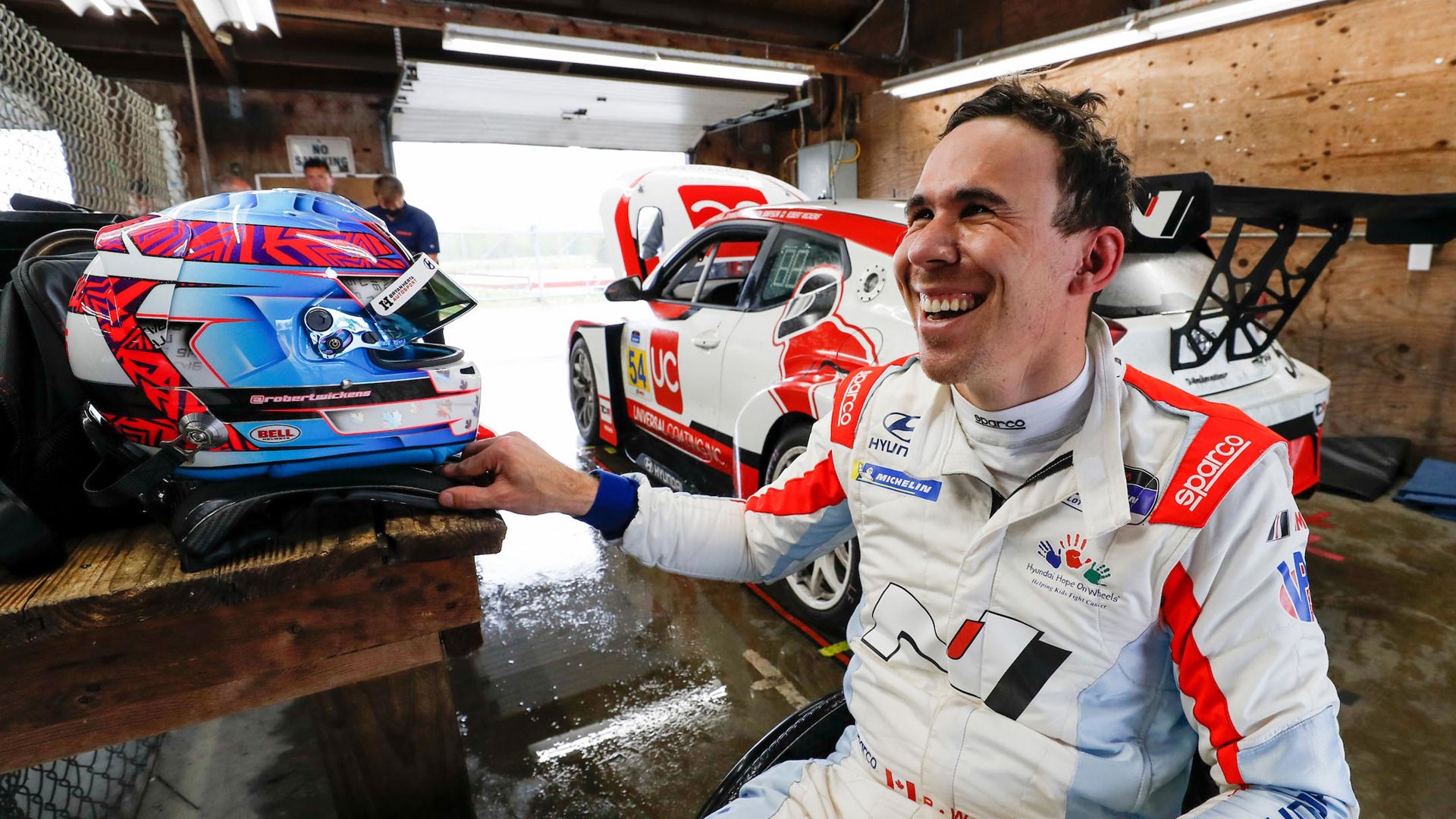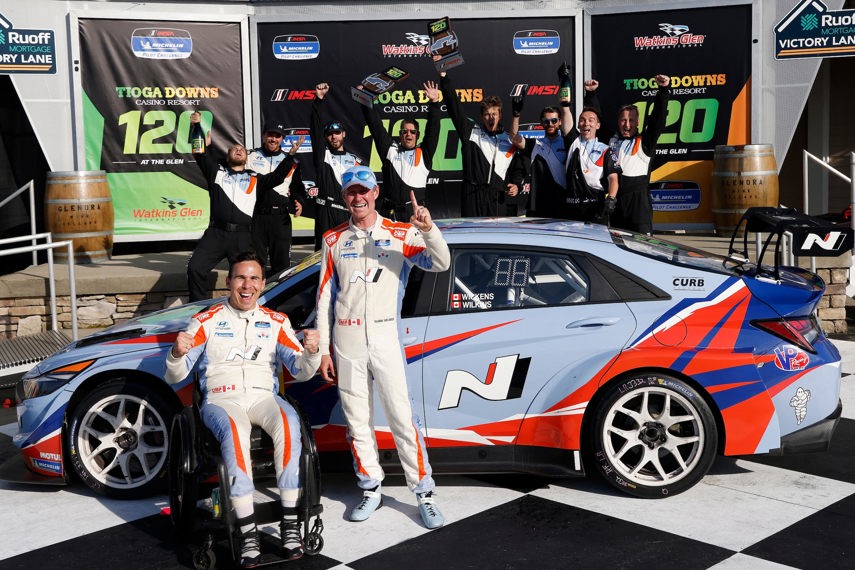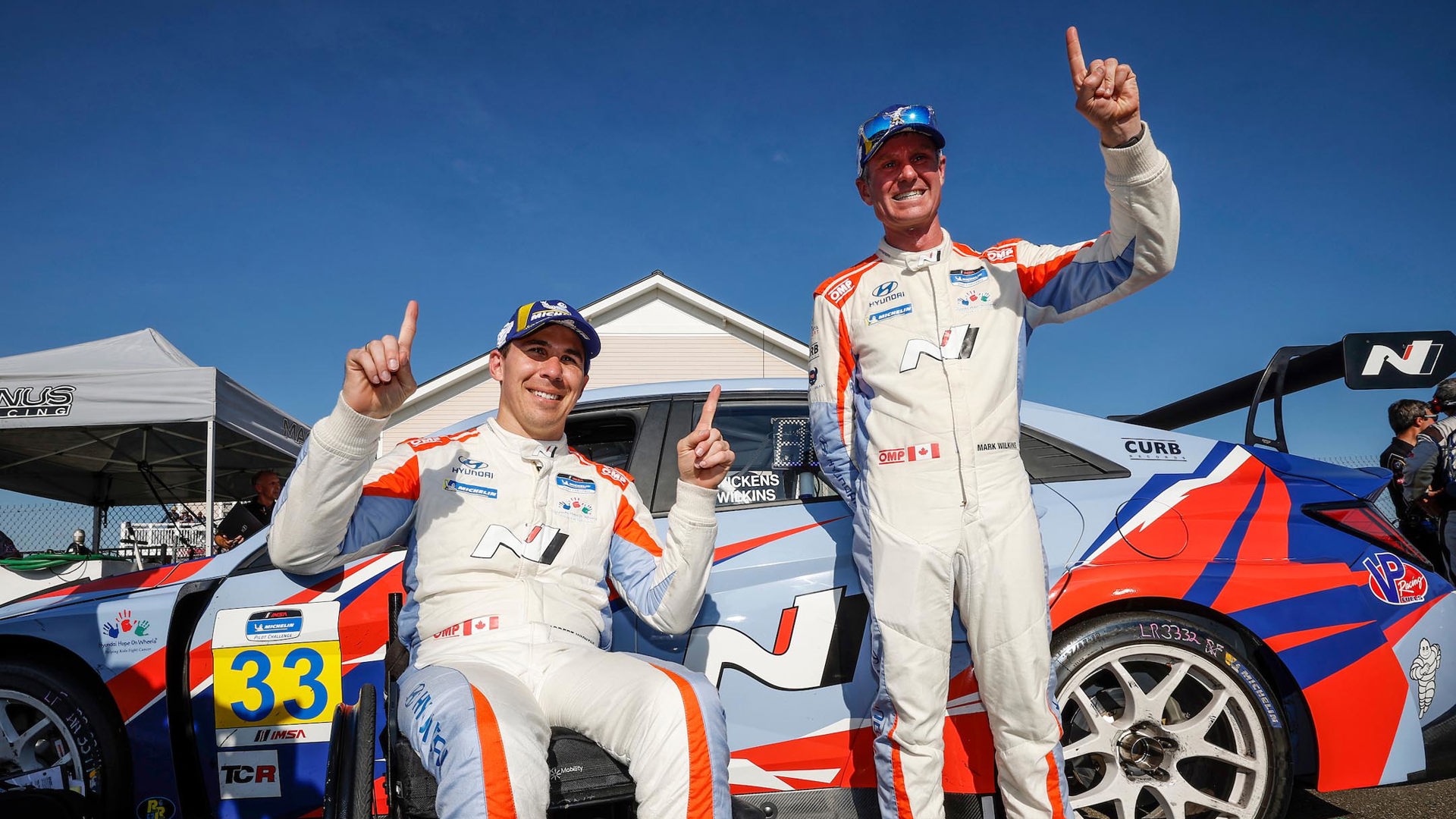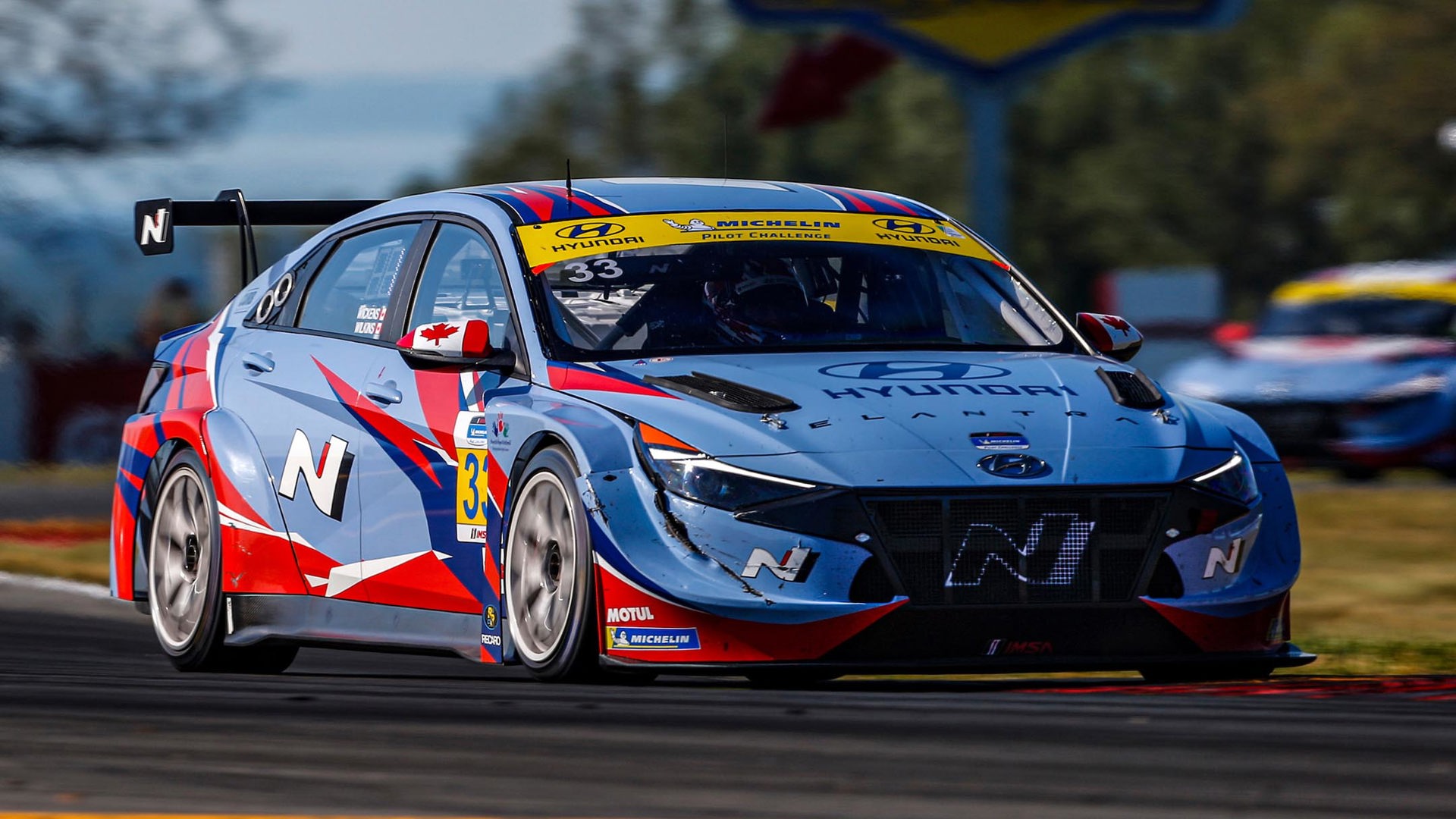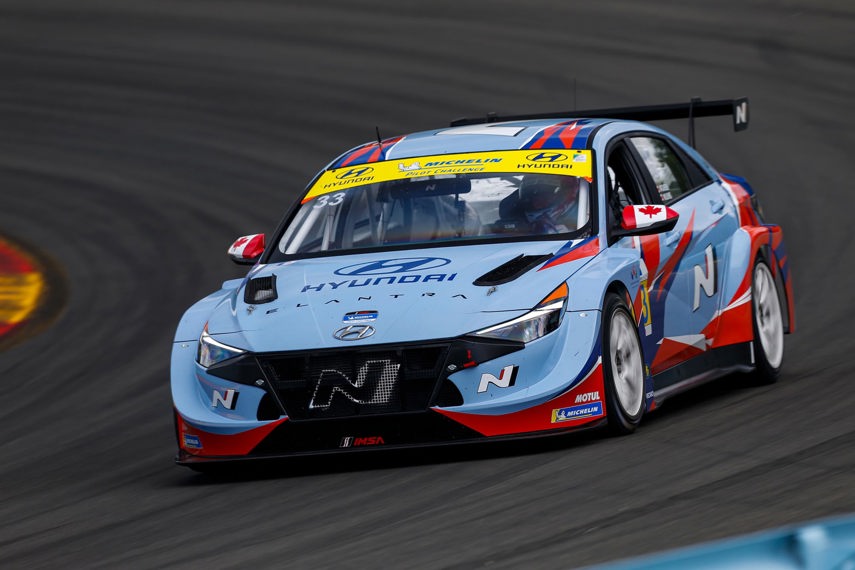It’s hard not to root for Robert Wickens.
The veteran racer with the boyish smile is equal parts clever, competitive, determined, and resilient – traits that have undoubtedly paid dividends over the years. They’ve also been instrumental as he has battled back from a devastating crash that altered the course of his career, and his life. Through it all, though, Wickens has maintained a rosy and determined disposition, not to mention his sense of humour.
“You never really know what happens in life,” he says, that contagious smile spreading across his face. “Looking at me now, I’m kind of the prime example of it.”
We’re chatting on an unseasonably cool afternoon in late June at Canadian Tire Motorsport Park (CTMP), the sounds and smells from the track wafting in through the windows as a pack of the hottest road-going Hyundais on the market whiz by outside. Wickens is hot off a victory in a Hyundai of his own: the No. 33 Bryan Herta Autosport Elantra N TCR he shares with fellow Canadian and all-around good guy Mark Wilkins, and the pair is just days away from attempting the same at the famed four-km circuit in Bowmanville, Ont.
The duo of Wickens and Wilkins may sound like a law firm, but they make for a formidable one-two punch in the Touring Car class in the Michelin Pilot Challenge. After a podium finish to start the 2022 season at Daytona International Speedway, the pair emerged victorious at Watkins Glen International in Upstate New York.
The win was significant for Wickens, who was sidelined by a horrific crash midway through his rookie IndyCar campaign in 2018 that left him with spinal cord and neck fractures, as well as broken ribs and legs, and broken bones in his arms and hands. That he’s racing again in spite of being paraplegic isn’t just some sort of feel-good story – it’s one of resolve and determination.
“As a competitor, I wanted to get back sooner,” he says. “You never know what your recovery ultimately looks like. When I was laying in the hospital bed, I wanted to return to IndyCar and I only wanted to miss maybe one season.”
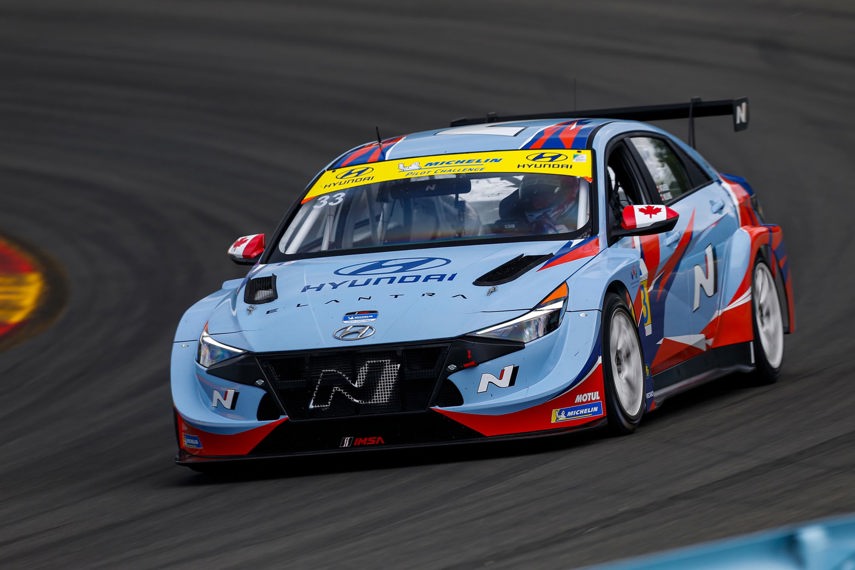
Wickens says he was on track to do almost exactly that in early 2020 – although not necessarily with an IndyCar team – but couldn’t find an opportunity. It’s a situation he harbours no resentment about, with a mixture of pragmatism and humility he’d be forgiven for lacking.
“I can’t just go to you as a team owner and say, ‘Here’s my helmet – let me show you what I can do in your race car, and you won’t be disappointed,’” he says. “You need to adapt the car, spend a lot of time doing R&D, making sure it’s safe (and) reliable, but then it’s also competitive and will allow me to be quick. There’s just so many moving parts, and you have to find a team boss that’s willing to do it.”
Enter Bryan Herta Autosport (BHA). With three consecutive Touring Class championships in the Michelin Pilot Challenge under its belt, plus an IndyCar entry of its own, the team – led by namesake former driver Bryan Herta, plus partners Sean Jones and Eric Chase – stepped up in a big way.
“I’m so grateful for the opportunity that Hyundai and Bryan Herta Autosport have given me to showcase that I haven’t forgotten how to drive,” says Wickens. “I think Bryan, deep down, knew I wasn’t particularly eyeing the Michelin Pilot Challenge as an option, but also I need to start somewhere, and I’m not trying to use them as a stepping stone.”
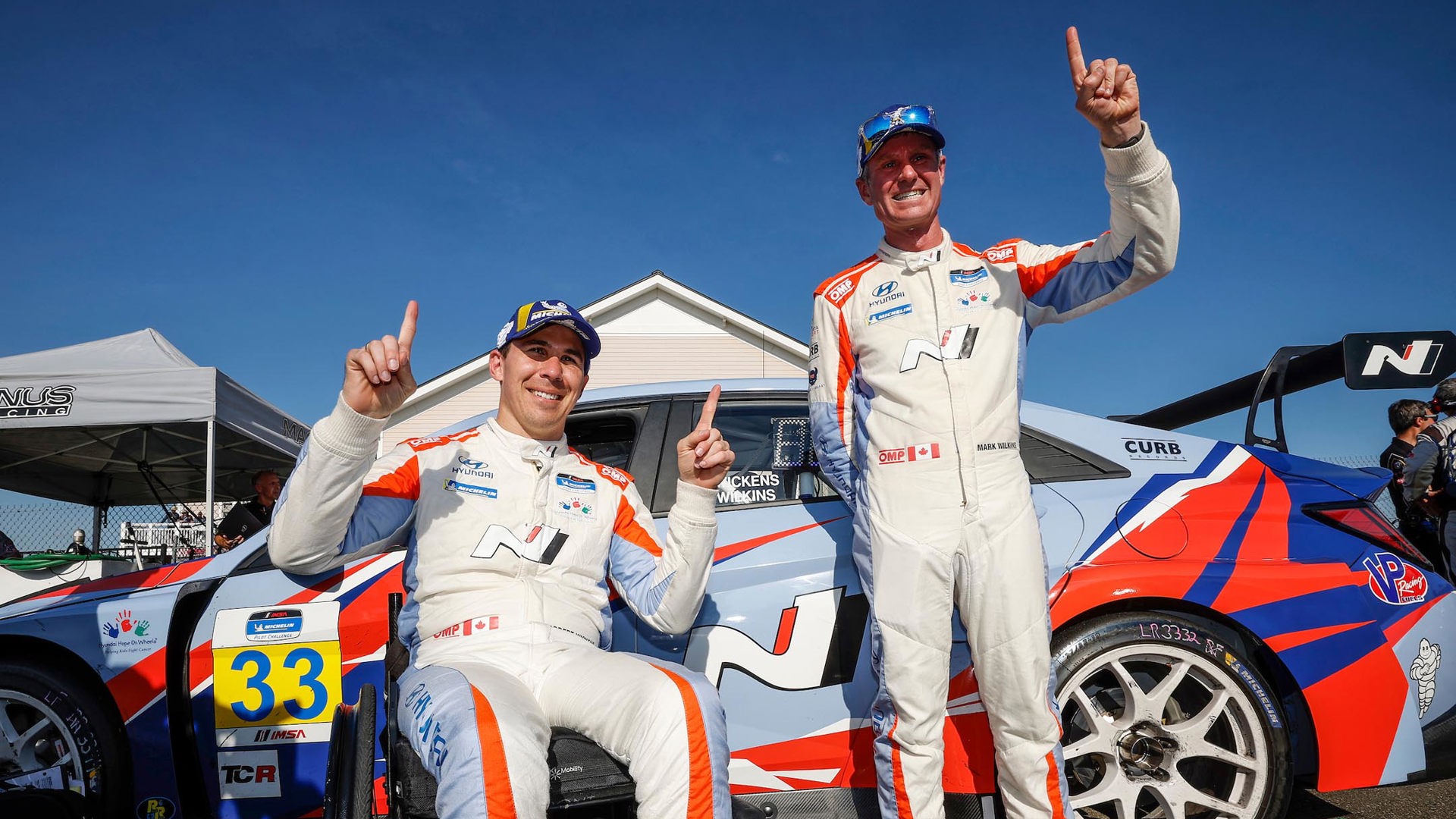
Mastering the hand controls he needs in order to operate the car is something he describes as a challenge – and one that was compounded by the fact that the Elantra N TCR is the first front-wheel drive car Wickens has ever raced. But if there’s a common thread to the man himself, it’s perseverance.
“One of my (strengths) has always been my adaptability – learning something new, getting up to speed quickly,” he says. “Learning a new car is something, in my opinion, I’ve always been one of the best at, where even with a first practice, give me five laps and I’ll likely be faster than everyone else – it’s just how I’ve always been.”
That’s been evident over the course of his career, including stops in Germany racing in the highly competitive DTM, as well as IndyCar in 2018 where he took pole position for his first-ever race and led for all but the final two laps. That promising season was cut short, of course, but not before Wickens impressed enough to take home rookie-of-the-year honours.
Faced with the road to recovery, his drive – not to mention his analytical approach to everything he does – had him studying hard to find any kind of advantage or competitive edge, but he kept coming up empty.
“Attention to detail is what got me this far in my career, and I wanted to know everything – I wanted to know what exercises looked like, I wanted to prepare myself so that when I got into the sessions I didn’t waste any time,” says Wickens. “There wasn’t really much, so when I got into those exercises we thought we’d share our journey for the next person to see.”
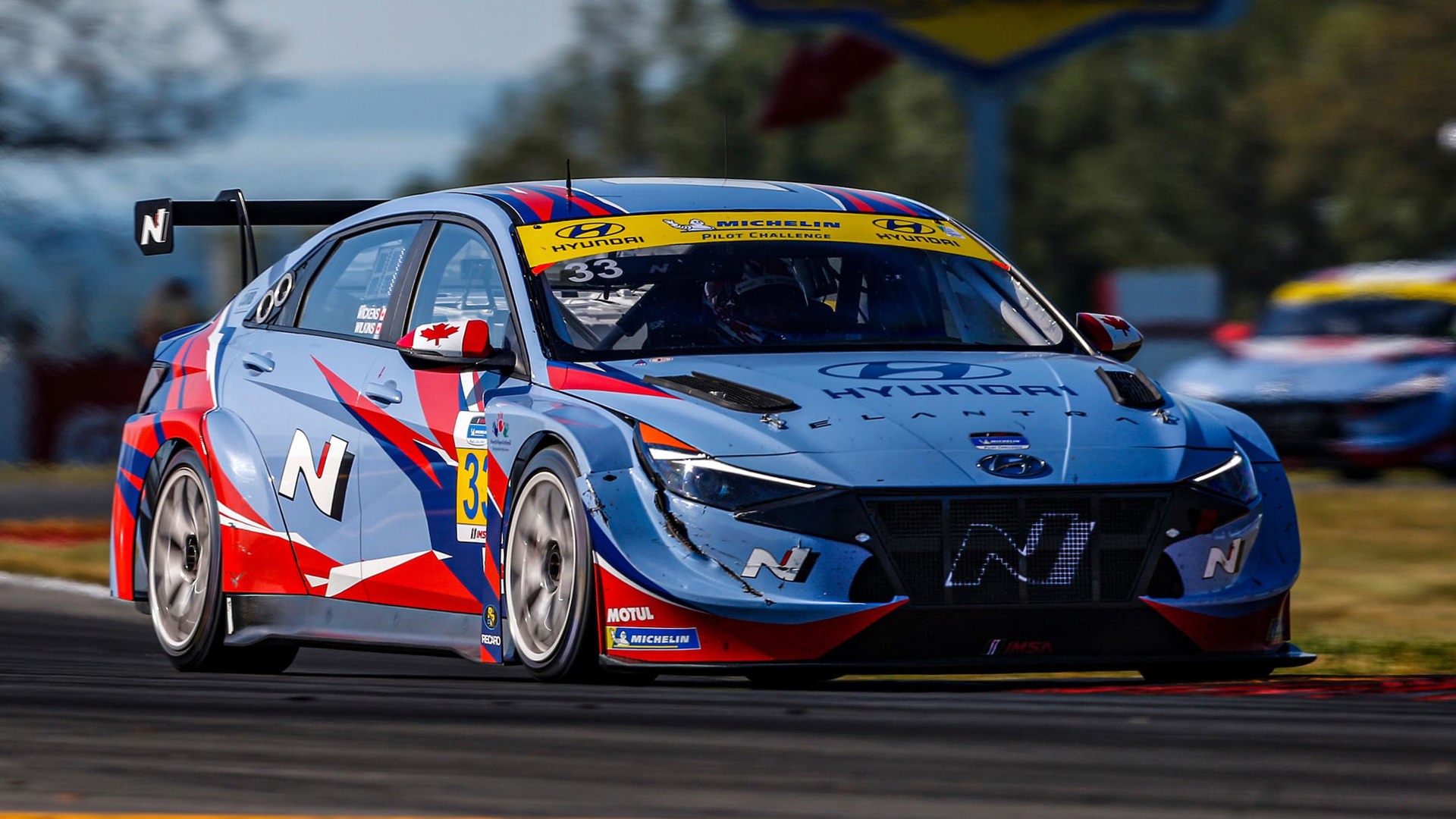
Sharing his recovery alongside wife Karli has been both inspirational and educational, but it has also revealed a lack of understanding about his injury, as well as those of others. Wickens describes paralysis as a “trigger word” that even he didn’t fully grasp prior to his 2018 crash.
“Obviously, I was aware of what paralysis was, but you don’t really know what it is until you experience it,” he says. “I remember probably four or five months into my recovery, I didn’t realize it, but in one of my (social media) posts I said something about being paraplegic, and then I was getting Google alerts from news (stories) saying, ‘Wickens confirms that he’s paralyzed.’ And I was like, ‘I’ve always been paralyzed – what don’t you guys understand about a spinal cord injury?’”
Through the therapy and frustrations, Wickens is back doing what he loves – and doing it well. Following his victory with Wilkins at Watkins Glen is something of a homecoming at CTMP, which is what brings us to the paddock for our chat in the first place.
Just a few days out from what’s to be his first time racing here since 2009, and Wickens is clearly excited to climb behind the wheel of his No. 33 car at a track he spent countless weekends watching the likes of legendary Canadian driver (and CTMP principal) Ron Fellows race here. It’s a far cry from the karts he grew up racing at the Mosport Karting Centre on the CTMP grounds, not to mention the IndyCar he was driving that fateful day in August 2018. But the last person you’ll hear grumbling about it is Wickens himself.
“I’m forever grateful for the opportunity, and if I end up spending a career (here) I think I’ll be happy,” he says.
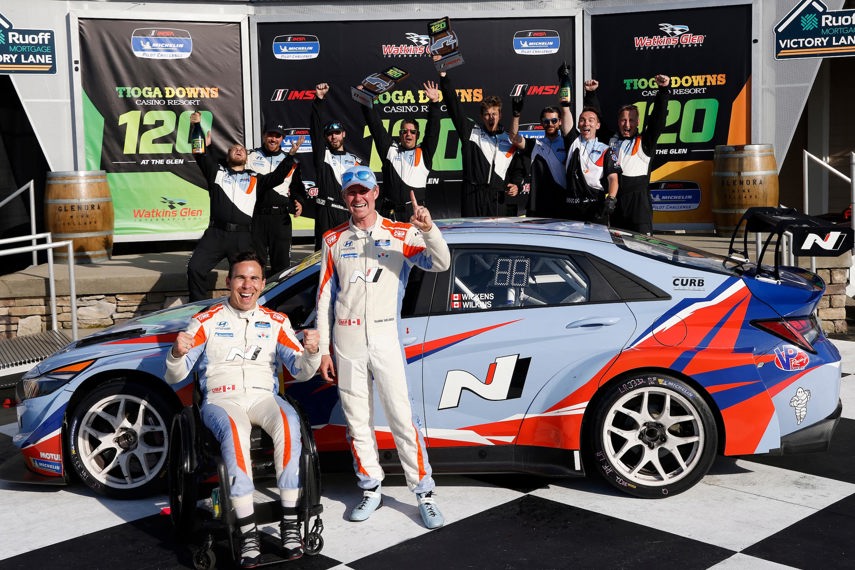
In racing, preparation is key. But so is adaptability. And if it hasn’t been obvious by now, those are two areas in which Wickens excels. So when Karli called to say their son was set to arrive two weeks early – not to mention the day before his race – Wickens made the trip home to Indianapolis, Ind., to welcome Wesley to the world (on Canada Day, no less) before heading back to CTMP to suit up alongside Wilkins.
With no time on the track, including a missed qualifying session, Wickens started from the back of the pack in the No. 33 Elantra N TCR. As clever, competitive, determined, and resilient as ever, he needed just 30 minutes to get into third position amongst the 14-car field. With his stint over halfway through the race, co-driver Wilkins did the rest, driving to the lead on a restart with 20 minutes to go and holding on for the victory.
With back-to-back wins under his belt, Wickens has tasted success at every level of racing he’s competed in – “it’s kind of cool to tick a new box,” as he puts it – and it doesn’t look like there’s an end in sight. As for what the future holds, well, Wickens says it best: in this life, you just never know what’s around the corner.
